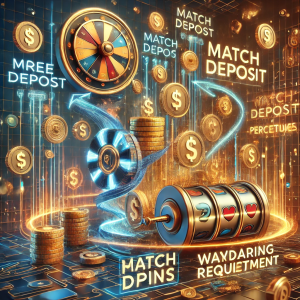INTRODUCTION
Just by scanning a QR or by typing your bank details, all your finances are under your control. Having all your finances sorted with a tap of a finger- sounds convenient, right?
Fintech apps are revolutionizing the way we manage money by offering super fast bill payments, seamless investments, and on-the-go budgeting. But with great convenience comes a big question: Can I trust this app with my financial data?
This internal conflict lies at the heart of the fintech industry. While the ease of managing finances through an app is undeniable, security concerns often linger. Here's where UX design steps in as the secret weapon for building a bridge between convenience and confidence. By prioritizing both security and usability, UX design can transform your fintech app into a trusted financial partner.
FINTECH UX - The Delicate Balance - Security vs Convenience
Just building security in a fintech app is not enough. The UX design must have a delicate balance between providing robust security measures and offering user-friendly experiences. While users are concerned about the safety and privacy of their financial data, they also crave convenience and a satisfactory experience. Achieving this equilibrium necessitates thoughtful fintech design that prioritizes both security and usability.
-
Building trust through UX Design
Fintech apps deal with sensitive information and finances, so building trust with users is crucial. UX design plays a major role in achieving this. Here are some key principles that UI UX design agency consider when designing a fintech app:
-
Transparency and Communication:
Transparency and communication are the cornerstone of trust in every application regardless of being a fintech app or not! UX design plays a pivotal role in ensuring clarity and openness. Through intuitive interfaces and clear language, UX design helps users understand how their data is collected, stored, and protected, fostering an environment of trust. By presenting transparent policies in a digestible format, UX design builds bridges between fintech companies and their users, instilling confidence and credibility in the platform.
-
Security Features with User-Friendliness:
Security features shouldn't feel like an obstacle. Features like fingerprint login, two-factor authentication, and data encryption are crucial, but they shouldn't slow the user down. A proficient UI UX design company adeptly integrates these security measures into the fintech UX seamlessly, ensuring that users can transact with confidence without encountering unnecessary hurdles. By harmonizing security and usability, UX design not only fortifies the application against threats but also enhances user trust and satisfaction.
-
Proactive User Education and Guidance:
Ever came across helpful in-app tutorials that guide us through secure practices or informative notifications reminding us to be vigilant?
Educating users about potential security threats and best practices is crucial for fostering a sense of security. By empowering users with knowledge, fintech apps not only enhance security but also create trust and credibility among the users. Hence, fintech design should have a strong focus on user education.
VISUAL CUES AND BRAND IDENTITY
Visual cues and brand identity serve as powerful tools in building user confidence, providing users with tangible reassurance of the platform's reliability and security. Consistent branding across the application reinforces familiarity and credibility, instilling trust in the minds of users. Moreover, UX design ensures that these elements are seamlessly integrated, creating a cohesive and reassuring user experience. By prioritizing visual cues and brand identity, UX design elevates user confidence, positioning the FinTech application as a trusted partner in managing financial transactions and data.
CRED: A GREAT EXAMPLE Of A FIN-NOVATIVE USER EXPERIENCE
CRED prioritizes a clean and modern aesthetic to ensure a smooth and enjoyable experience for its members. The app achieves this through several design choices:
Visual Clarity: Neumorphism, a subtle 3D effect, adds depth to buttons and cards without feeling overwhelming. This keeps the interface clutter-free while still providing clear visual cues.
Intuitive Navigation: Animations and chunking information into digestible groups make navigating the app effortless. From the splash screen's smooth animation that grabs your attention to the bottom navigation bar's clear icons and lighting effect, everything feels intuitive.
Organized Information: The rewards screen exemplifies CRED's commitment to the organization. Tabs with light-up effects and information grouped into cards make finding what you need a breeze. This consistency fosters a sense of familiarity and comfort as you explore the app.
Effortless Interaction: Swipe gestures throughout the app, like dismissing notifications with a swipe, feel natural and intuitive.
Minimalist Focus: Every element on the screen serves a purpose, adhering to a minimalist design principle. This reduces clutter and allows you to focus on the task at hand, whether it's making a payment or exploring rewards.
By prioritizing user-friendliness and a clean aesthetic, CRED empowers its members to manage their finances confidently and easily.
CONCLUSION
Fintech apps offer undeniable convenience for managing finances, but security concerns can be a major hurdle. Here's where UX design excels. By carefully balancing robust security with user-friendly features, Fintech UX builds trust and transforms a Fintech app into a trusted financial partner.
Transparency through clear interfaces and communication is key. Users need to understand how their data is handled. Security features like two-factor authentication shouldn't feel like a burden. UI UX design companies should seamlessly integrate security without sacrificing ease of use.
Educating users about security best practices empowers them and fosters trust. Finally, a strong brand identity with consistent visual cues assures users of the platform's reliability. By prioritizing these UX design principles, fintech apps can win user confidence and become an essential tool for managing finances.



